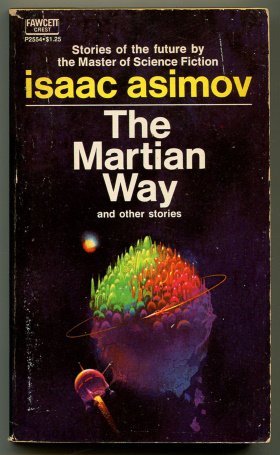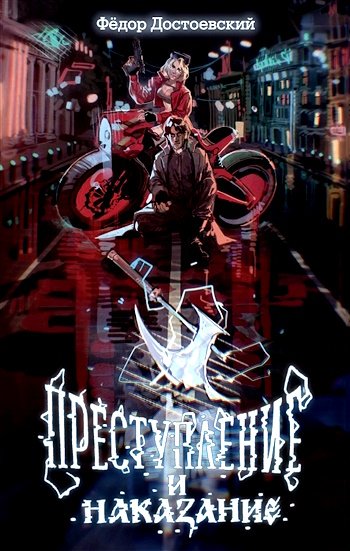Davenport looked helplessly about the room. He looked at the myriad volumes of lore about the light-years. He could see through the open door into the room beyond, with its tokens of the worlds beyond the sky. And he looked at Dr Urth, pale at the thought of non-grav jet, and shrugged his shoulders.
‘I’ll bring Peyton here. Right to this room. Will that satisfy you?’
Dr Urth puffed out his breath in a deep sigh. ‘Quite.’ ‘I hope you can deliver, Dr Urth.’
‘I will do my best, Mr Davenport.’
Louis Peyton stared with distaste at his surroundings and with contempt at the fat man who bobbed his head h greeting. He glanced at the seat offered him and brushed it with his hand before sitting down. Davenport took a seat next to him, with his blaster holster in clear view.
The fat man was smiling as he sat down and patted his round abdomen as though he had just finished a good meal and were intent on letting the world know about it.
He said, ‘Good evening, Mr Peyton. I am Dr Wendell Urth, extraterrologist.’
Peyton looked at him again. ‘And what do you want with me?’
‘I want to know if you were on the Moon at any time in the month of August.’
‘I was not.’
‘Yet no man saw you on Earth between the days of August first and August thirtieth.’
‘I lived my normal life in August. I am never seen during that month. Let him tell you.’ And he jerked his head in the direction of Davenport.
Dr Urth chuckled. ‘How nice if we could test this matter. If there were only some physical manner in which we could differentiate Moon from Earth. If, for instance, we could analyze the dust in your hair and say, ‘Aha, Moon rock.’ Unfortunately we can’t. Moon rock is much the same as Earth rock. Even if it weren’t, there wouldn’t be any in your hair unless you stepped onto the lunar surface without a spacesuit, which is unlikely.’
Peyton remained impassive.
Dr Urth went on, smiling benevolently, and lifting a hand to steady the glasses perched precariously on the bulb of his nose. ‘A man traveling in space or on the Moon breathes Earth air, eats Earth food. He carries Earth environment next to his skin whether he’s in his ship or in his spacesuit. We are looking for a man who spent two days in space going to the Moon, at least a week on the Moon, and two days coming back from the Moon. In all that time he carried Earth next to his skin, which makes it difficult.’
‘I’d suggest,’ said Peyton, ‘that you can make it less difficult by releasing me and looking for the real murderer.’’
‘It may come to that,’ said Dr Urth. ‘Have you ever seen anything like this?’ His hand pushed its pudgy way to the ground beside his chair and came up with a gray sphere that sent back subdued highlights.
Peyton smiled. ‘It looks like a Singing Bell to me.’’
‘It is a Singing Bell. The murder was committed for the sake of Singing Bells. What do you think of this one?’
‘I think it is badly flawed.’
‘Ah, but inspect it,’ said Dr Urth, and with a quick motion of his hand he tossed it through six feet of air to Peyton.
Devenport cried out and half-rose from his chair. Peyton brought up his arms with an effort, but so quickly that he managed to catch the Bell.
Peyton said, ‘You damned fool. Don’t throw it around that way.’’
‘You respect Singing Bells, do you?’
‘Too much to break one. That’s no crime, at least.’’ Peyton stroked the Bell gently, then lifted it to his ear and shook _it slowl , listening to the soft clicks of the Lunoliths, those small pumice particles, as they rattled in vacuum.
Then, holding the Bell up by the length of steel wire st ll attac ed to it he ran a thumbnail over its surface with an expert, curvmg motion. It anged! The note was very mellow, ve flutelike,_ holding with a slight vibrato that faded lingeringly and conJured up pictures of a summer twilight.
For a short moment’ all three men were lost in the sound.
And then Dr Urth said, ‘Throw it back, Mr Peyton. Toss it here. and held out his hand in peremptory gesture.
Automatically Louis Peyton tossed the Bell. It traveled its short arc one-third of the way to Dr Urth’s waiting hand, curved downward and shattered with a heartbroken, sighing discord on the floor.
Davenport and Peyton stared at the gray slivers with equal wordlessness and Dr Urth’s calm voice went almost unheard as he said, When the criminal’s cache of crude Bells is located, I’ll ask that a flawless one, properly polished, be given to me, as replacement and fee.’
‘A fee? For what?’ demanded Davenport irritably.
‘Surely the matter is now obvious. Despite my little speech of a moment ago, there is one piece of Earth’s environmen_t that no space traveler carries with him and that is Earth’s su,face gravity. The fact that Mr Peyton could so egregiously misjudge the toss of an object he obviously valued so highly could mean only that his mus les are not yet readjusted to the pull of Earthly gravity. It is my professional opm1on, Mr Davenport, that your prisoner has, in the last few days, been way fro Earth. He has either been in space or on some planetary obJect considerably smaller in size than the Earth – as, for example, the Moon.’
Davenport rose triumphantly to his feet. ‘Let me have your opinion in writing,’ he said, hand on blaster, ‘and that wit’:. be good enough to get me permission to use a psychoprobe.’
Louis Peyton, dazed and unresisting, had only the numb realization that any testament he could now leave would have to include the fact of ultimate failure.
The Talking Stone
The asteroid belt is large and its human occupancy small. Larry Vemadsky, in the seventh month of his year-long assignment to Station Five, wondered with increasing frequency if his salary could possibly compensate for a nearly solitary confinement seventy million miles from Earth. He was a slight youth, who did not bear the look of either a spationautical engineer or an asteroid man. He had blue eyes and butter-yellow hair and an invincible air of innocence that masked a quick mind and an isolation-sharpened bump of curiosity.
Both the look of innocence and the bump of curiosity served him well on board the Robert Q.
When the Robert Q. landed on the outer platform of Station Five, Vernadsky was on board almost immediately. There was an eager delight about him which, in a dog, would have been accompanied by a vibrating tail and a happy cacophony of barks.
The fact that the captain of the Robert Q. met his grins with a stem sour silence that sat heavily on his thick-featured face made no difference. As far as Vemadsky was concerned the ship was yearned-for company and was welcome. It was welcome to any amount of the millions of gallons of ice or any of the tons of frozen food concentrates stacked away in the hollowed-out asteroid that served as Station Five. Vemadsky was ready with any power tool that might be necessary, any replacement that might be required for any hyperatomic motor.
Vemadsky was grinning all over his boyish face as he filled out the routine form, writing it out quickly for later conversion into computer notation for filing. He put down ship’s name and serial number, engine number, field generator number, and so on, port of embarkation (‘asteroids, damned lot of them, don’t know which was last’ and Vernadsky simply wrote ‘Belt’ which was the usual abbreviation for ‘asteroid belt’); port of destination (‘Earth’); reason for stopping (‘stuttering hyperatomic drive’).

























